
The Lowlander Widebody 380HD HBD
A product of GT Bunning, is rapidly gaining traction in the Australian agricultural sector. Renowned for its proficiency in chicken manure application, this spreader is increasingly favoured by discerning farmers.

The agriculture industry has come a long way from traditional farming methods. With technological advancements, we now have access to cutting-edge machinery that allows us to optimise our operations and achieve higher yields. One such innovation that has revolutionised the field is Variable Rate Spreading with a Trailing Spreader.
Variable Rate Technology (VRT) enables farmers to spread fertiliser accurately, ensuring that the right amount of nutrients is delivered to each part of the land. This feature helps reduce the amount of fertiliser required while maximising yields, making it an environmentally and economically sustainable solution for modern agriculture.
In this article, we will explore Variable Rate Spreading with a Landaco Spreader in depth, including its benefits, how it works, and tips on how to use it effectively. So, let’s dive in!
Variable Rate Spreading is a technology that allows farmers to adjust the rate at which fertiliser is spread based on different factors like soil type, crop type, and nutrient requirements. This process ensures that the right amount of fertiliser is delivered to each part of the land, enhancing crop health and yield.
You see, it’s not uncommon to have significant variations in just one field. Certain areas may require more fertiliser, herbicide, or even a higher planting density to achieve the desired yield. Thankfully, Variable Rate Application (VRA) can manage this task efficiently by adjusting application rates without the time-consuming human errors that may arise when done manually. What’s more, this advanced technology can be applied to specific areas, rows, and even individual plants within a field. Now that’s taking farming to a whole new level!
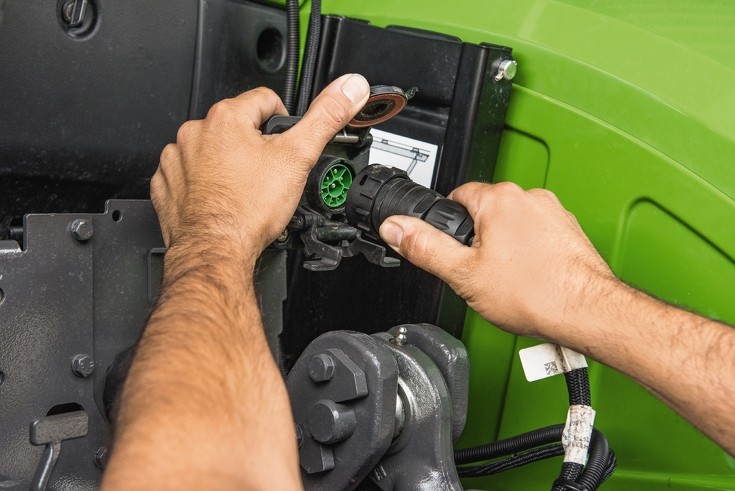
Landaco Spreader utilises cutting-edge technology that enables Variable Rate Spreading. The Spreader is equipped with an electronic controller that can manage the spreader’s spinner speed and the rpm of the spreaders floor.
Available with Topcon ISOBUS, John Deere Dry-Rate, Trimble FIQ, Raven & More.
The spreader controller connects to the tractors GPS functionality and enables farmers to map their fields accurately. This mapping process helps farmers identify the different areas of their land and their varying nutrient requirements.
The Spreader then adjusts the rate of product application based on the information received from the Variable Rate Application (VRA) map. This ensures that the correct amount of fertiliser is delivered to each part of the field, eliminating wastage and reducing the overall cost of fertiliser usage.
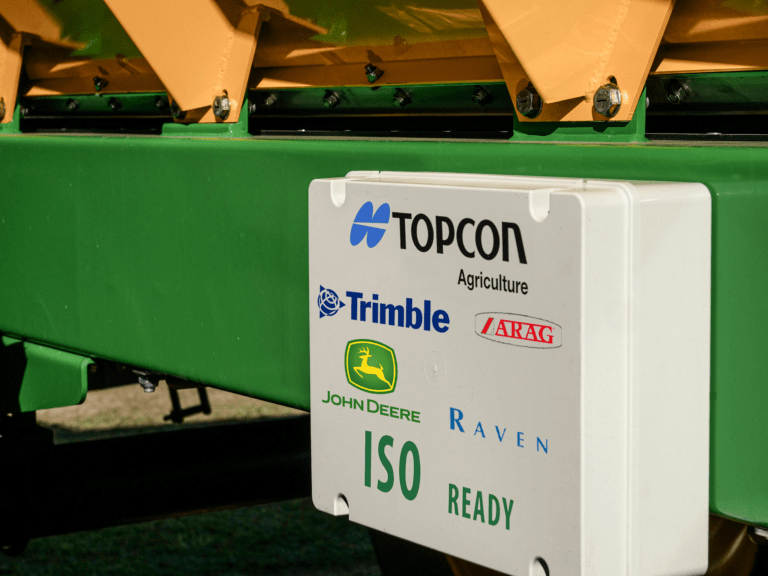
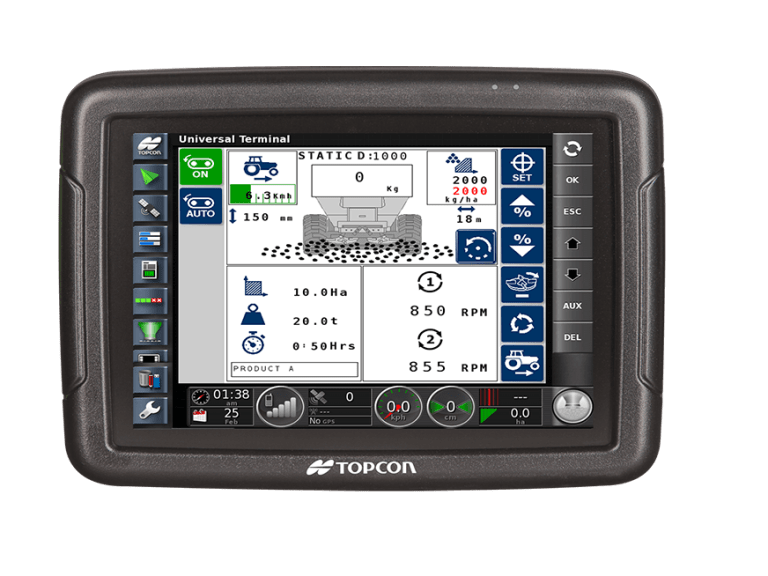
Variable Rate Spreading with a Landaco Spreader offers a wide range of benefits to farmers, including:
Improved crop yield: By delivering the right amount of fertiliser to each zone (applied area in the field), Variable Rate Spreading helps improve crop health and yield.
Reduced fertiliser usage: Traditional spreading methods often result in over fertilisation and waste. With Variable Rate Spreading, farmers can significantly reduce the amount of fertiliser used, leading to cost savings and environmental sustainability.
Enhanced efficiency: Landaco Spreader’s with Variable Rate Spreading technology ensures that farmers can cover more ground in less time, increasing efficiency and productivity.
Accurate nutrient delivery: The technology allows farmers to deliver the right amount of nutrients to each part of the crop, reducing the risk of nutrient deficiency or toxicity.
To make the most out of Variable Rate Spreading with a Landaco Spreader, here are some tips to keep in mind:
Accurate mapping: Make sure you map your fields correctly so you can see how each part of the land needs different amounts of nutrients. When zoning, consider the spreaders capability.
Use the right fertilisers: Different crops & soil types require different nutrients, so make sure to use the right fertilisers type and application rate to meet their specific needs.
Regular maintenance: If you take care of your Landaco Spreader regularly, it will work at its best, giving you accurate rates of spreading and consistent results. Spinner Vane wear can have an effect on spread accuracy
Proper calibration: Proper calibration of your Landaco Spreader ensures that the spreader delivers the right amount of fertiliser accurately, reducing wastage and increasing efficiency. Ensure the Spinners are set correct for the product being spread, belt is tensioned accordingly & door height is within the desired range.
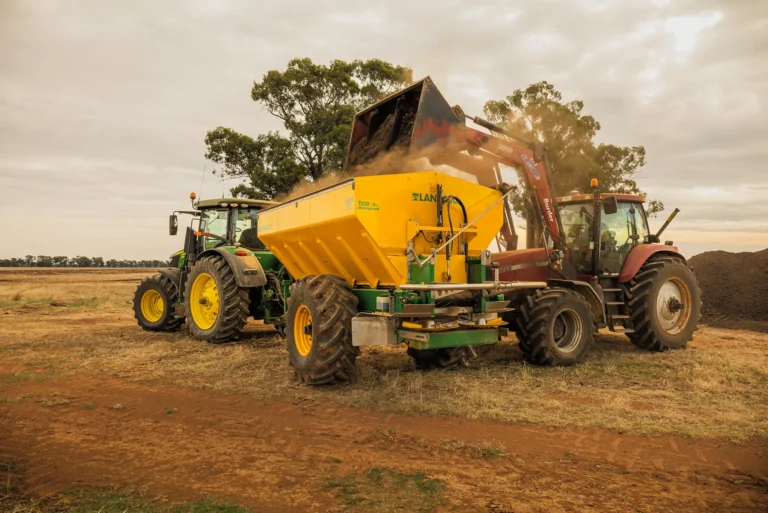
Q: Can Variable Rate Spreading technology be used for different crops?
A: Yes, Variable Rate Spreading can be used for different crops. The technology allows farmers to adjust the rate of fertiliser spreading based on the specific nutrient requirements of different crops, ensuring optimal growth and yield. VRT is used for crops like: wheat, canola, oats, cotton, pulses, barley and more.
Q: Is Variable Rate Spreading with a Landaco Spreader easy to use?
A: Yes, Variable Rate Spreading with a Landaco Spreader is user-friendly and straightforward. The Spreader’s electronic controller is designed for ease of use, and the spreading process is straightforward, making it easy for farmers to achieve optimal results.
Q: Can Variable Rate Spreading technology be used for organic farming?
A: Yes, Variable Rate Spreading technology can be used for organic farming. The technology allows farmers to deliver the right amount of organic fertilisers accurately, ensuring optimal crop growth and yield.
Q: Does Variable Rate Spreading with a Landaco Spreader reduce environmental impact?
A: Yes, Variable Rate Spreading reduces the environmental impact of fertiliser usage. By delivering the right amount of fertilisers to each part of the land, the technology reduces fertiliser wastage, leading to a more sustainable and environmentally friendly agriculture practise.
Variable Rate Spreading with a Landaco Spreader is a game-changing technology that has revolutionised modern agriculture. By delivering the right amount of fertilisers to each part of your fields, the technology enhances crop health and yield while reducing the environmental impact of farming. In this article, we have explored Variable Rate Spreading in depth, including its benefits, how it works, and tips on how to use it effectively. By following these tips and utilising technology, farmers can achieve optimal results and increase their overall efficiency and productivity.
So, whether you’re a seasoned farmer or just starting, make sure to explore Variable Rate Spreading with a Landaco Spreader and master the art of optimal fertiliser spreading.

Learn More about the T100 Trailing Spreader
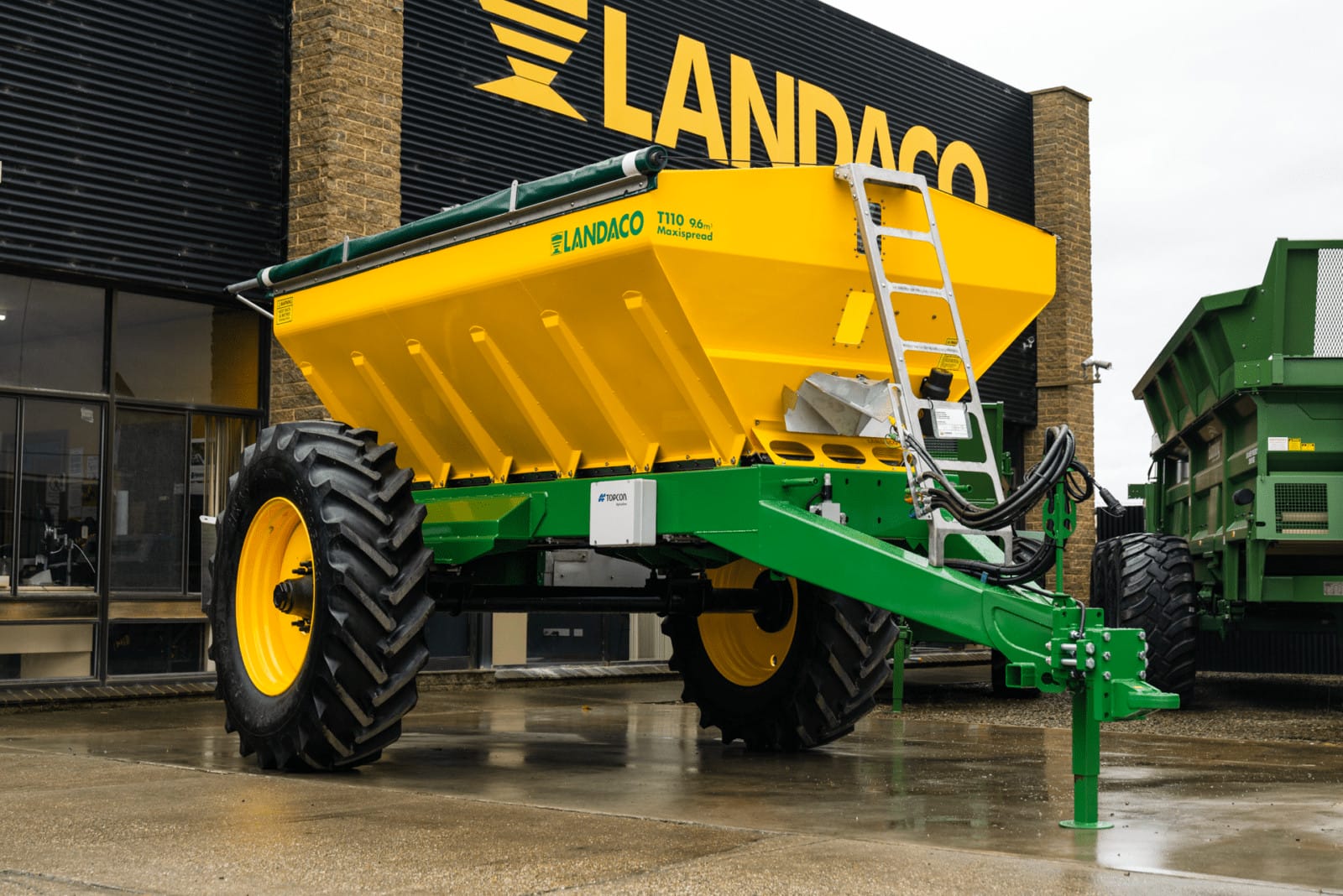
Learn More about the Landaco T110 VR
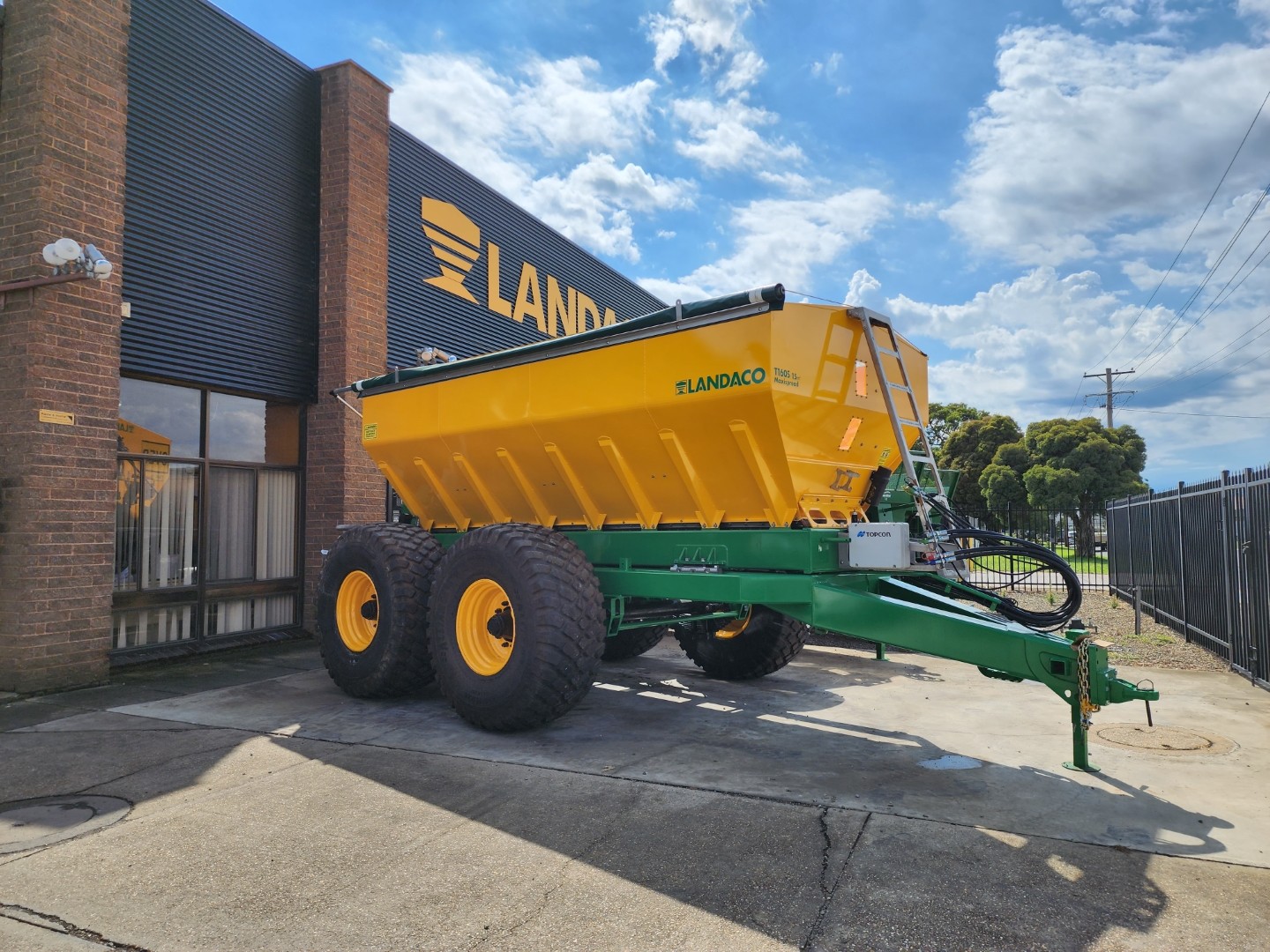
Learn More about the Landaco Maxispread T160S Tandem
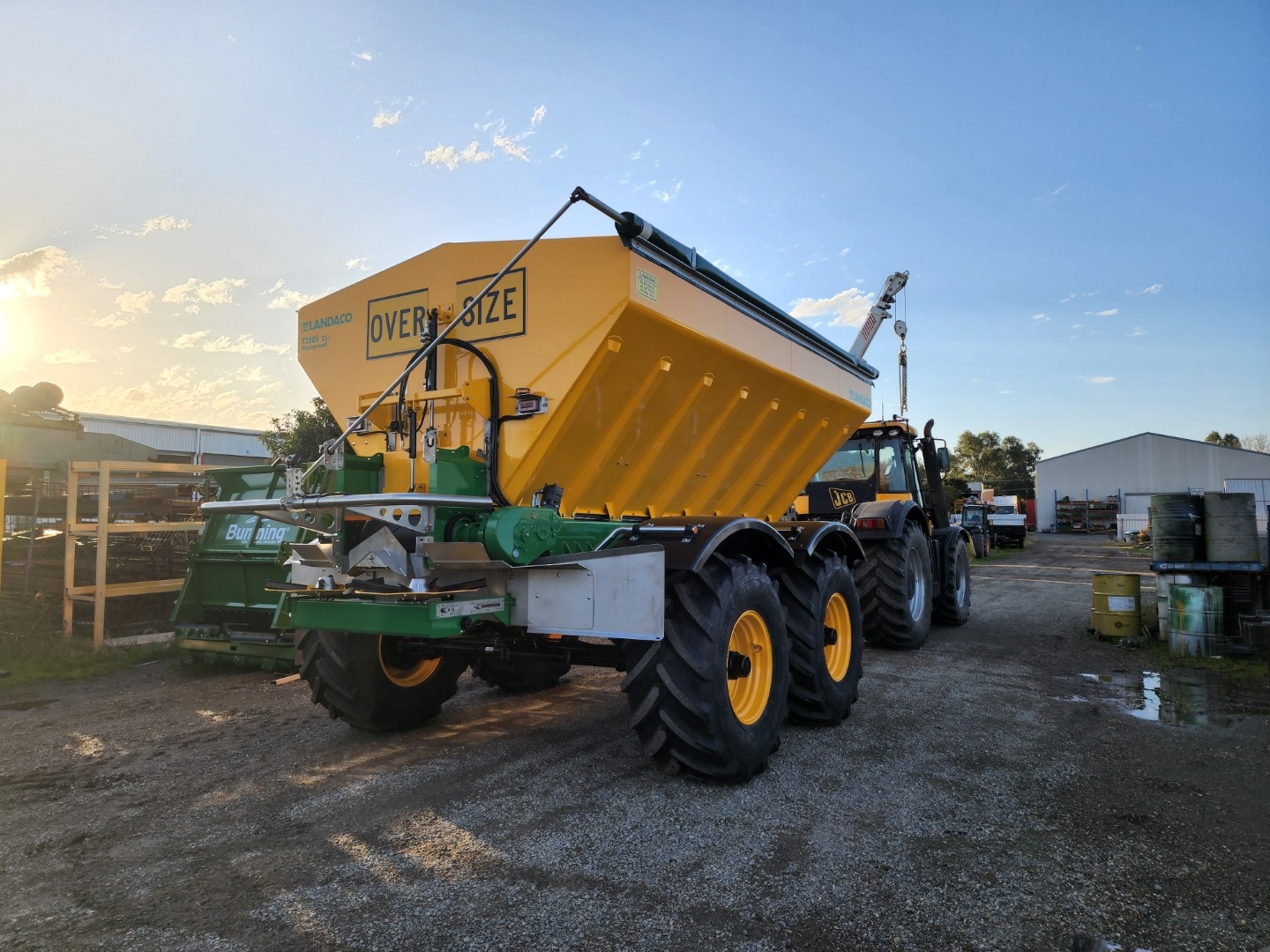
Learn More about the Landaco Maxispread T260S Tandem

A product of GT Bunning, is rapidly gaining traction in the Australian agricultural sector. Renowned for its proficiency in chicken manure application, this spreader is increasingly favoured by discerning farmers.
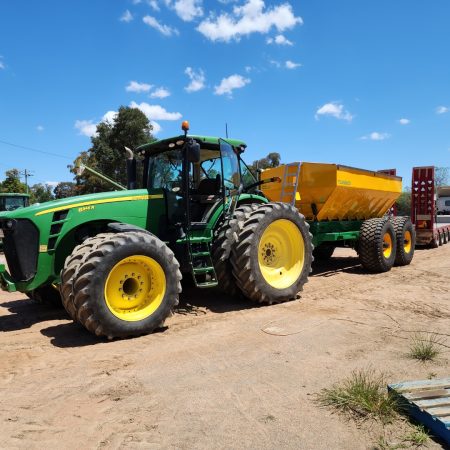
Unlock the secrets to maintaining your trailing spreader with our comprehensive guide. Aussie farmers, keep your essential equipment in peak condition, contributing to correct operation for optimal crop nutrient distribution every season. Dive in for expert tips and ensure your farming operations run seamlessly.
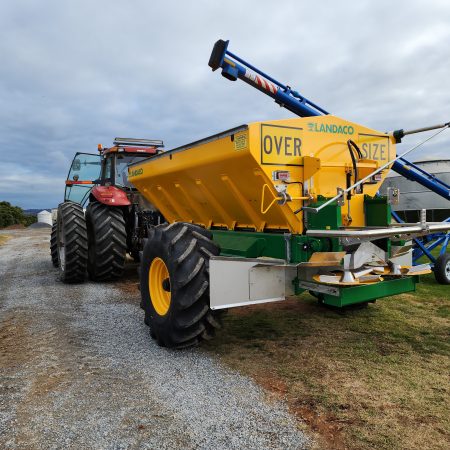
ICS Spinner System Upgrade Introducing the ICS Upgrade to the 4B8 Spinner System: Taking Landaco Spreaders to New Heights We are thrilled to unveil our
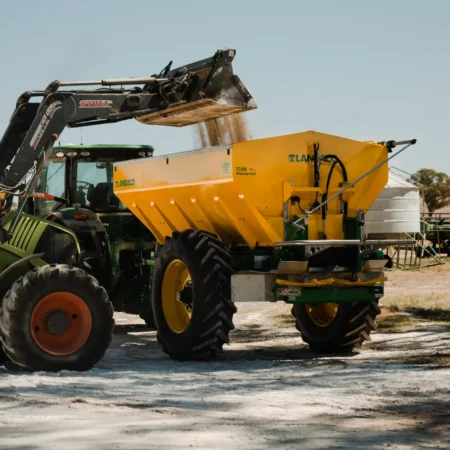
Variable Rate Spreading Variable Rate Spreading with a Landaco Spreader The agriculture industry has come a long way from traditional farming methods. With technological advancements,
